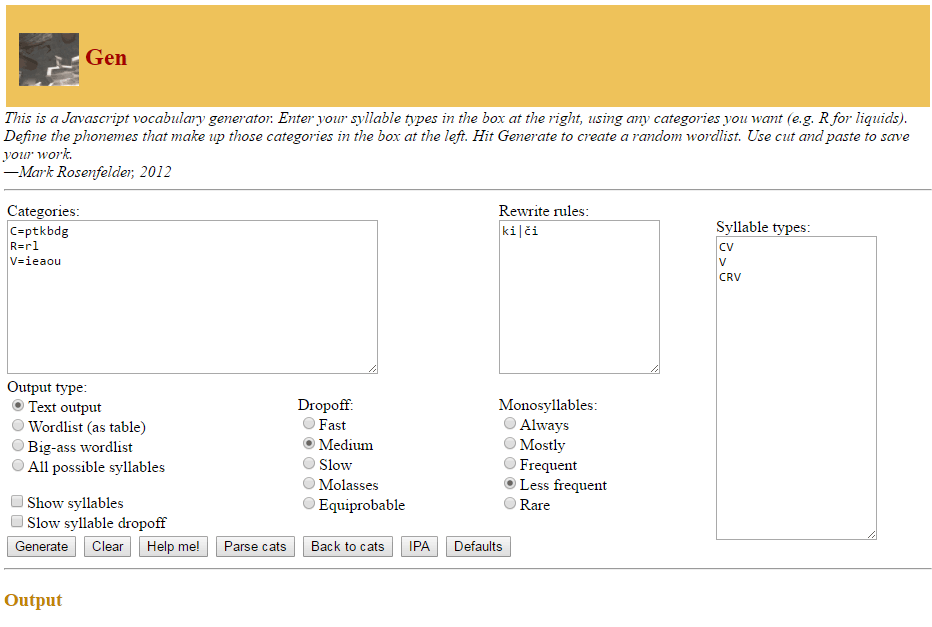

Gen (& Sound Change Applier)
It’s easy to generate random combinations of letters, but that’s not the same thing as inventing new words. Languages have patterns and rules, which is why even the simple set of digrams that Elite uses:
char pairs0[]=
“ABOUSEITILETSTONLONUTHNOALLEXEGEZACEBISOUSESARMAINDIREA.ERATENBERALAVETIEDORQUANTEISRION”;char pairs[] = “..LEXEGEZACEBISO”
“USESARMAINDIREA.”
“ERATENBERALAVETI”
“EDORQUANTEISRION”; /* Dots should be nullprint characters */
…gets better results than just throwing random letters together.
If you’re trying to create a new language (and there are many constructed language enthusiasts) then you’ll probably want something that takes into account the deeper patterns in the language, like syllable types, non-English-vowels, sound changes, and so on.
There’s several generators for conlang creators to use as inspiration for new words that fit the patterns of their languages, but I’m just going to talk about one today: Mark Rosenfelder’s Gen, which goes together with his guide for creating constructed languages.
The settings for Gen’s generator reflect the language that it’s generating for. If a language (like Quechua) only allows syllables with a optional-constant-required-vowel-optional-constant pattern, the generator need to take that into account. Likewise, a language can have different sets of vowels: Cusco Quechua only has /a/, /i/, and /u/, while Danish has /ɑ a æ ɛ e i o ɔ u ø œ ɶ y ʌ ɒ/. This obviously affects the kinds of words that fit.
The Sound Change Applier is even more about the hidden processes of language, in this case the way that pronunciation tends to shift over time.
Once again, the hidden structure is an important source of order for the generator. This is a principle that can be applied to more than just language generation: what structure is important for the thing you’re trying to generate? Find that and you’ll find what’s important about the thing you’re generating.
That’s also why generators can be an effective form of rhetoric: by describing a process, it can also act as a critique of the system that process creates.
http://www.zompist.com/gen.html
http://www.zompist.com/sca2.html
